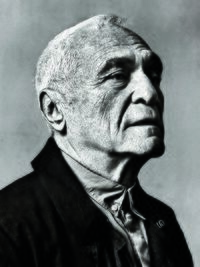John Giorno

Relevance
Morrissey describes time with John Giorno in Autobiography:
After the show, Johnny and I find ourselves in the Bowery district with the poet John Giorno, who takes us both to the quietly famous William Burroughs ‘Bunker’. Through clattering warehouse elevators we are in ice-cold lock-up depositories of vast storehouses and stockrooms, where philosophical art-bits are scattered elegantly around mismatched sofas for those who might care to sink. The chill drizzle of New York’s 1890s is here, now, with the chill drizzle of the 1980s. It is here where the art set have suffered with relish, in rooms where turn-of-the-century migrant workers would have been fired for smiling. My infantile reactions do not match Johnny’s; he is bored. His boredom suddenly alerts me to the realization that, yes, I am bored, too. I am introduced to Gregory Corso, which doesn’t make sense since I am certain he is dead, but this is not something to raise when the subject stands before you. I may not necessarily have been wrong – such being the wonders of Warhol who could possibly achieve anything at all with the right stuffing. John Giorno begins the process of explanation, and I begin to long for my own bed with clean sheets. John has an odd way of offering a slight giggle before speaking, because he obviously knows what he’s about to say and he somehow can’t wait to hear it, yet as he talks nothing becomes clear. It matters little. These accidental yet under-your-skin brushes spread blood through the tissue, and you are excited to at last be out and about.
Wikipedia Information
 |
John Giorno (December 4, 1936 – October 11, 2019) was an American poet and performance artist. He founded the not-for-profit production company Giorno Poetry Systems and organized a number of early multimedia poetry experiments and events. Giorno's creative journey was marked by collaborations, groundbreaking initiatives, and a deep exploration of diverse art forms. He gained prominence through his association with pop art luminary Andy Warhol, sparking a creative partnership that propelled his career to new heights. Giorno's artistic evolution was shaped by his encounters with Warhol and other influential figures. His notable appearance in Warhol's 1964 film Sleep, where he slept on camera for over five hours, introduced audiences to his unique blend of performance and artistic expression. Giorno's creative trajectory was marked by an array of multimedia poetry experiments, one of which was the pioneering "Dial-A-Poem" project. This venture allowed individuals to access brief poems by contemporary poets via telephone, forging a novel connection between technology and poetry. Collaboration was a hallmark of Giorno's work, as he joined forces with renowned artists, including William S. Burroughs, Patti Smith, Laurie Anderson, Philip Glass, and Robert Mapplethorpe. His poetic style evolved over time, encompassing techniques such as appropriation, cut-ups, and montage. His signature double-column poems, characterized by repetition, mirrored the vocal distortions he employed in his performances. As Giorno's career progressed, his work began to incorporate political themes, notably his active protests against the Vietnam War. Beyond his artistic endeavors, Giorno embraced spirituality and activism. A transformative trip to India in 1971 introduced him to Tibetan Buddhism, particularly the Nyingma tradition. He was one of the earliest Western students of Tibetan Buddhism, inviting various Tibetan teachers to New York City and hosting them. As a committed AIDS activist, he founded the AIDS Treatment Project in 1984, providing vital support to those affected by the epidemic. Giorno's impact extended globally, as he continued to perform, collaborate, and exhibit his work, leaving an enduring legacy in the worlds of poetry, performance art, and multimedia exploration.